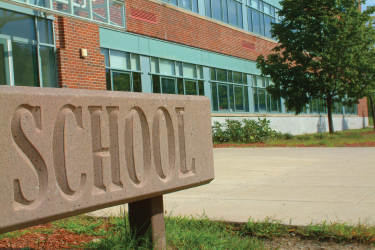Equity in Schools
Educating our youth is our greatest collective responsibility.
“[E]ducation … is the very foundation of good citizenship. Today it is a principal instrument in awakening the child to cultural values, in preparing [them] for later professional training, and in helping [them] to adjust normally to [their] environment. … Such an opportunity … is a right which must be made available to all on equal terms.” Brown v. Board of Education, 347 U.S. 483, 493 (1954).
 Discrimination in education, in all its forms, robs children of the ability to become high performing citizens, and undermines our collective ability to ensure a well-functioning, equitable society.
Discrimination in education, in all its forms, robs children of the ability to become high performing citizens, and undermines our collective ability to ensure a well-functioning, equitable society.
The Civil Rights Enforcement Section generally exercises jurisdiction over cases involving systemic patterns or practices of discrimination or that otherwise raise civil rights issues of statewide significance. Complaints of non-systemic or single incidents of discrimination generally are referred to the Pennsylvania Human Relations Commission or another appropriate agency.
Prospective and current students are protected from discrimination in the educational context based on various “protected classes,” meaning the categories of traits protected by state and federal law – race, color, national origin, ancestry, sex, religion age, or disability. Students also are protected from retaliation for filing a complaint or otherwise aiding an investigation. These protections stem from both state and federal law.
Generally, the following practices are covered by state and federal anti-discrimination laws governing educational institutions:
- Segregating students based on a protected class.
- Applying admission rules differently based on a protected class.
- Favoring or disfavoring certain students based on a protected class.
- Applying a policy or practice that causes a significant disparate impact based on a protected class, but either (1) there is not a strong justification or (2) a less discriminatory alternative exists that also meets the goals of the policy or practice.
- Applying student misconduct or discipline rules differently to students based on a protected class.
- The law protects students accused of misconduct from discrimination in the classroom; when a referral is made to an authority outside the classroom; in the school’s response; and any administrative reviews of disciplinary decisions.
- Creating or permitting a hostile educational environment based on a protected class.
- Once a school knows or reasonably should know of possible student-on-student harassment, it must take immediate and appropriate action to investigate or otherwise determine what occurred.
- If harassment has occurred, a school must take prompt and effective steps reasonably calculated to end the harassment, eliminate any hostile environment, and prevent its recurrence.
- Failing to provide students with disabilities accessible facilities or equal access to academic programs, athletics, and accessible technology.
Pennsylvania Human Relations Act; Pennsylvania Fair Educational Opportunities Act; Title VI of the Civil Rights Act of 1964; Title II of the Americans with Disabilities Act of 1990; Section 504 of the Rehabilitation Act of 1973; Title IX of the Education Amendments Act of 1972.
Two of the most frequent civil rights concerns raised in the educational context are disparate discipline and harassment. The following are examples of how such discrimination might play out.
Disparate Discipline Examples
Two students in sixth grade – a black student with a disability, and white student without a disability – engage in a fight, but the school imposes different disciplinary sanctions on them. Both students have similar disciplinary histories, having each previously received after school detentions for minor infractions. Whether the disparate discipline could be found discriminatory depends on an analysis involving three questions:
- Were the students similarly situated?
Yes, because they were involved in the same incident and have similar discipline records. - Does the school have evidence of facts and circumstances that it had a legitimate, nondiscriminatory reason for the different treatment?
For example: evidence that the school disciplined the black, disabled student more severely because the student instigated the fight and directly threatened school officials who tried to break it up. - Is the school’s reason a pretext for discrimination?
For example: based on witness statements, codes of conduct, disciplinary records, etc., did the school in fact conform to its written policies? Did the black, disabled student in fact instigate the fight? Etc.
Note: Statistical evidence could be marshaled, to determine whether, over a significant time period, there was a very stark disparity in the rates that black and disabled students received the harsh discipline when involved in fights with other students with similar disciplinary backgrounds. Such evidence could be used to show “pretext” in an individual case, and could also be used to conclude that the school has engaged in systemic, “pattern or practice” discrimination. The evidence could be rebutted by an alternative statistical analysis, or by evidence that the discrimination evidence was based on faulty data, flawed computations, or an improper methodology.
Harassment Example
Some students anonymously inserted sexual and anti-female notes into female students’ lockers and notebooks, and shouted sexual and anti-female language in the hallways in between classes. Some female students told school officials that they did not feel safe at school. The school investigated and responded to individual instances of misconduct by assigning detention to the few student perpetrators it could identify. However, the offensive notes and anonymous shout-outs continued to the point that several female students’ attendance began to suffer.
A more effective response would have included, in addition to punishing the perpetrators, such steps as reaffirming the school’s policy against discrimination (including sexual and sex-based harassment), publicizing the means to report allegations, training faculty on constructive responses, hosting class discussions about sexual harassment, and conducting outreach to involve parents and students in an effort to identify problems and improve the school climate.
Nothing on this page should be construed as legal advice.


